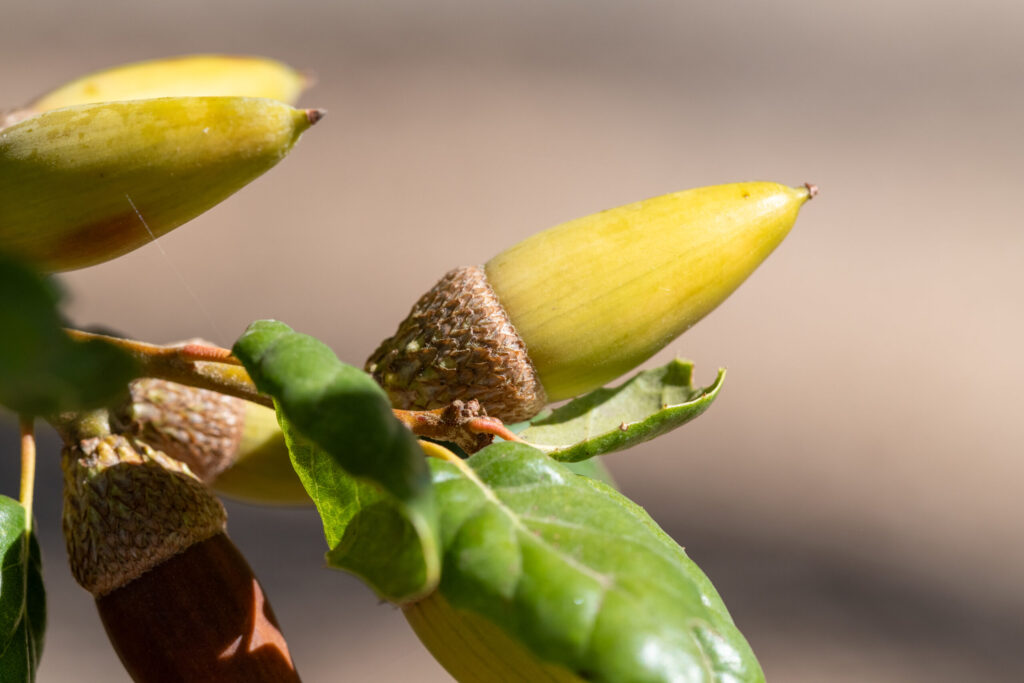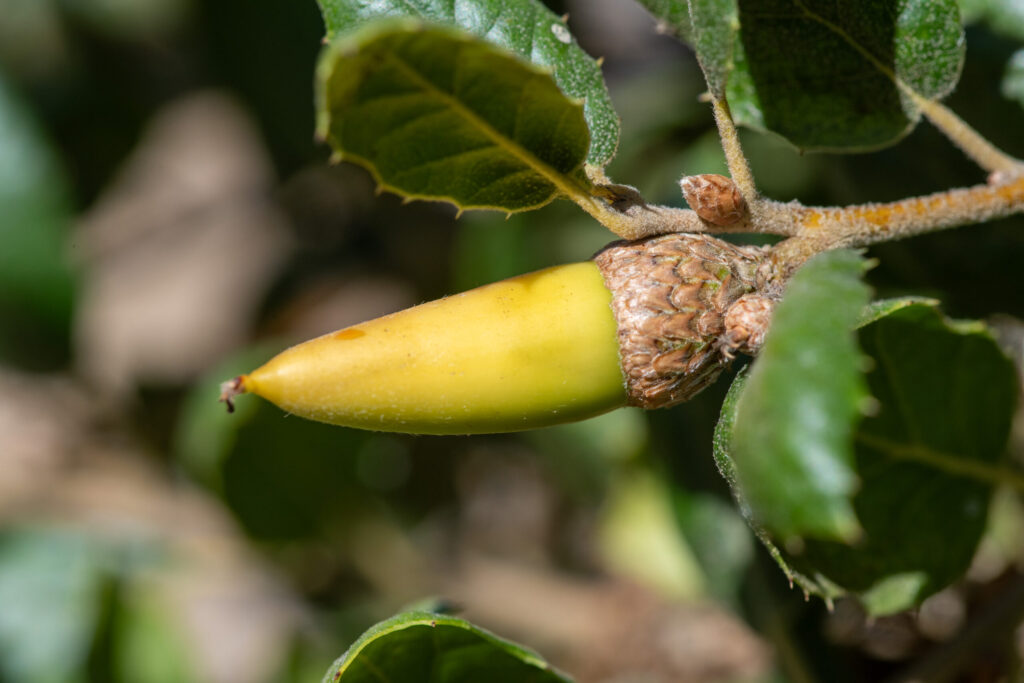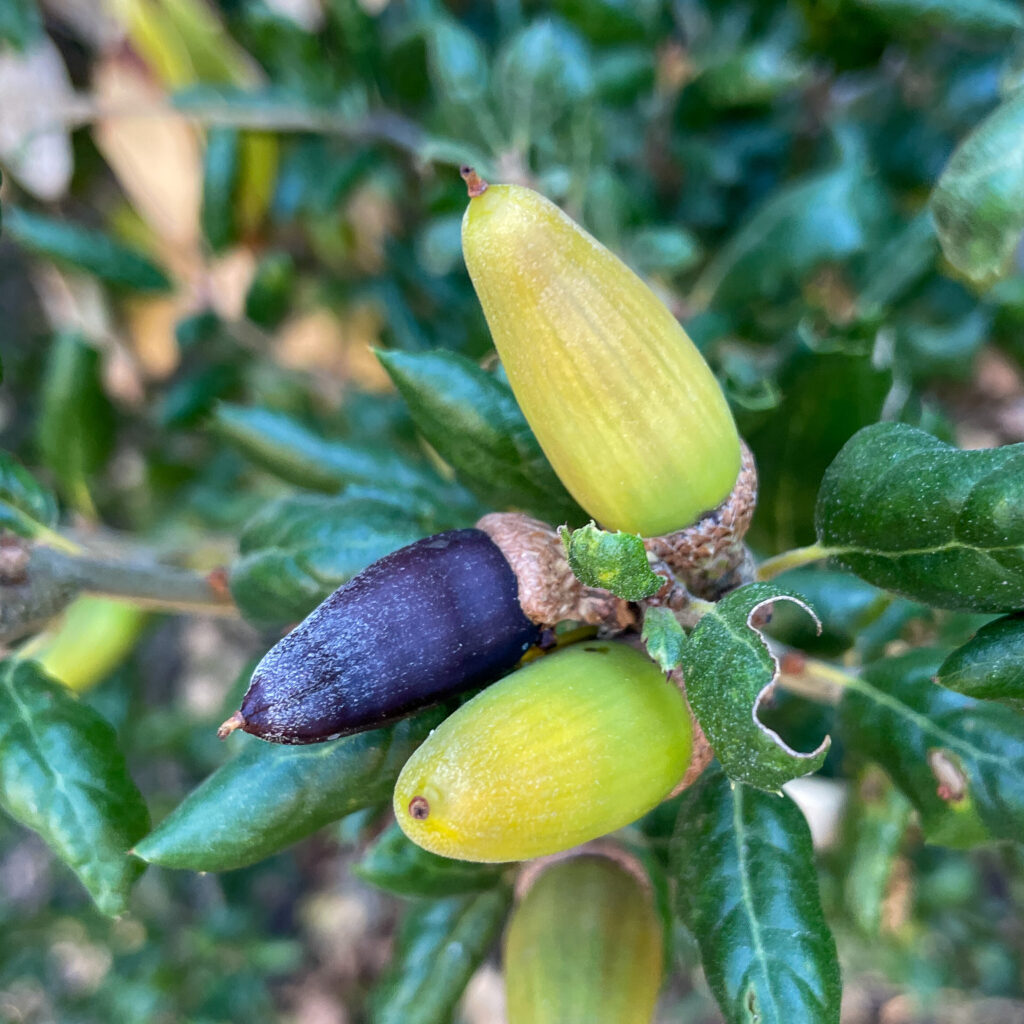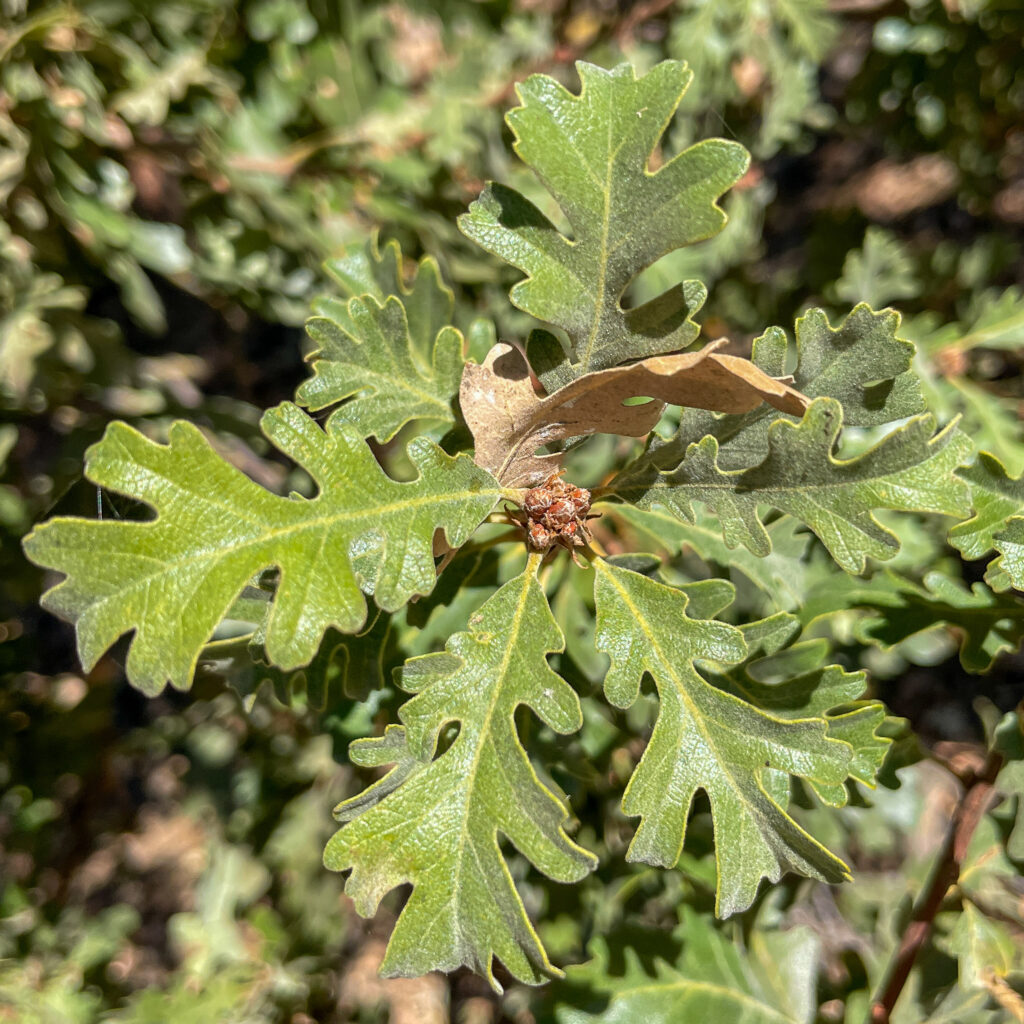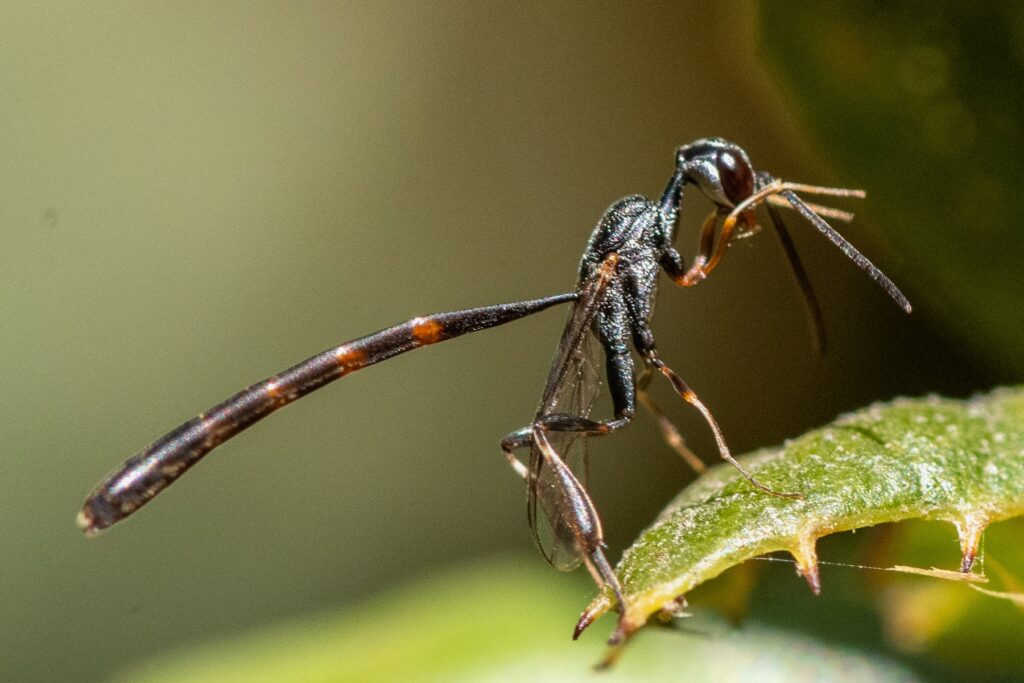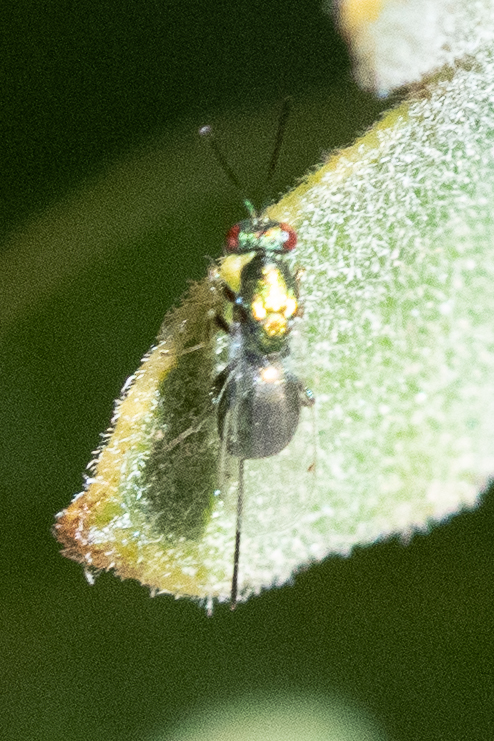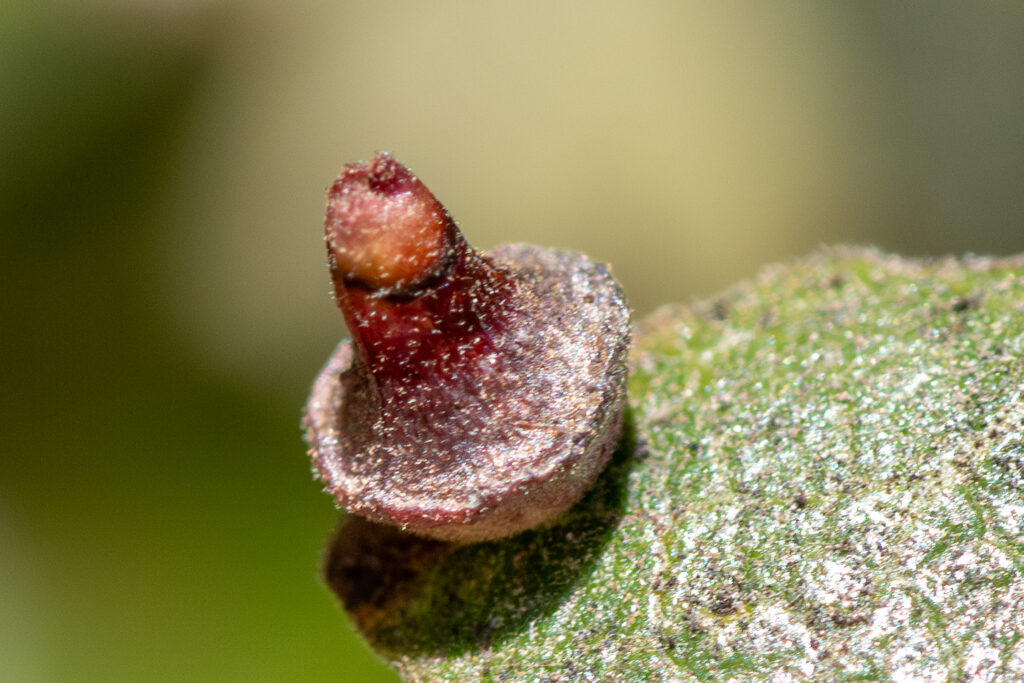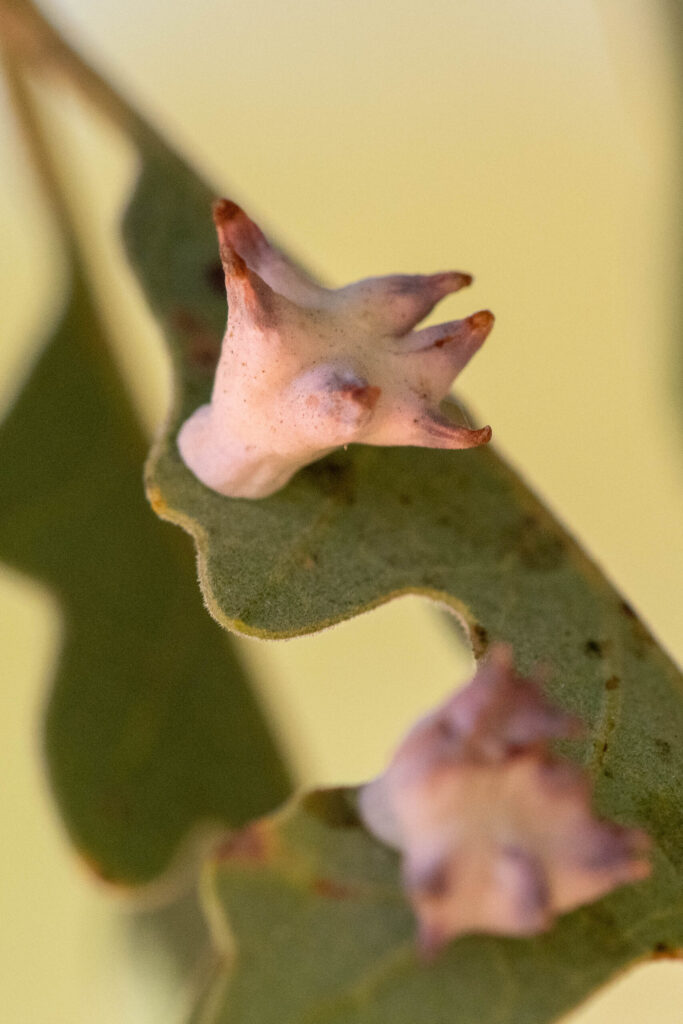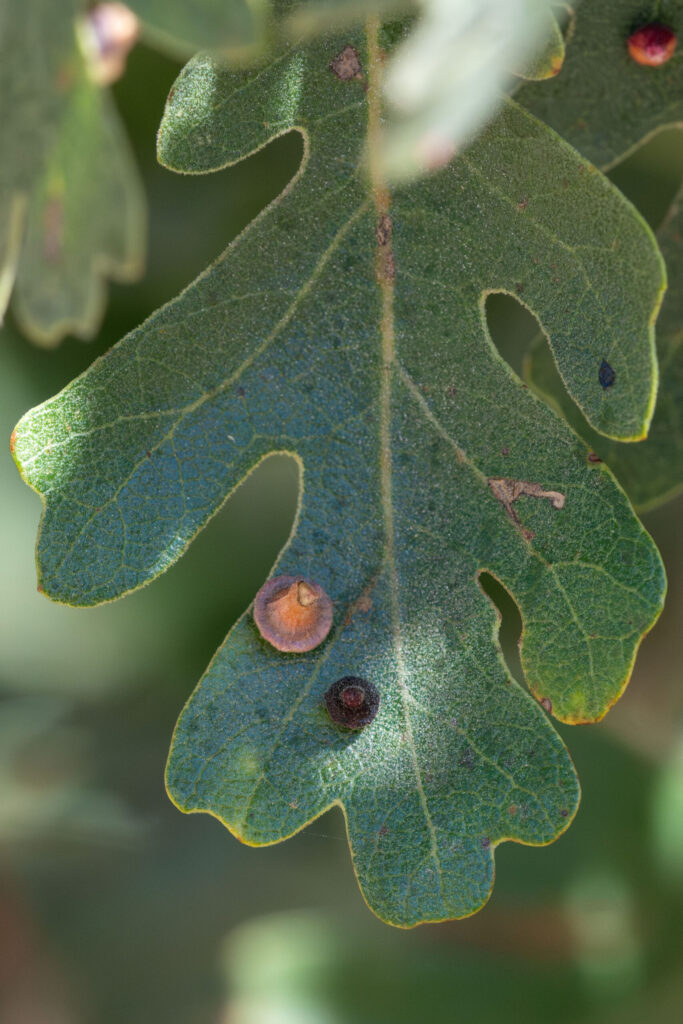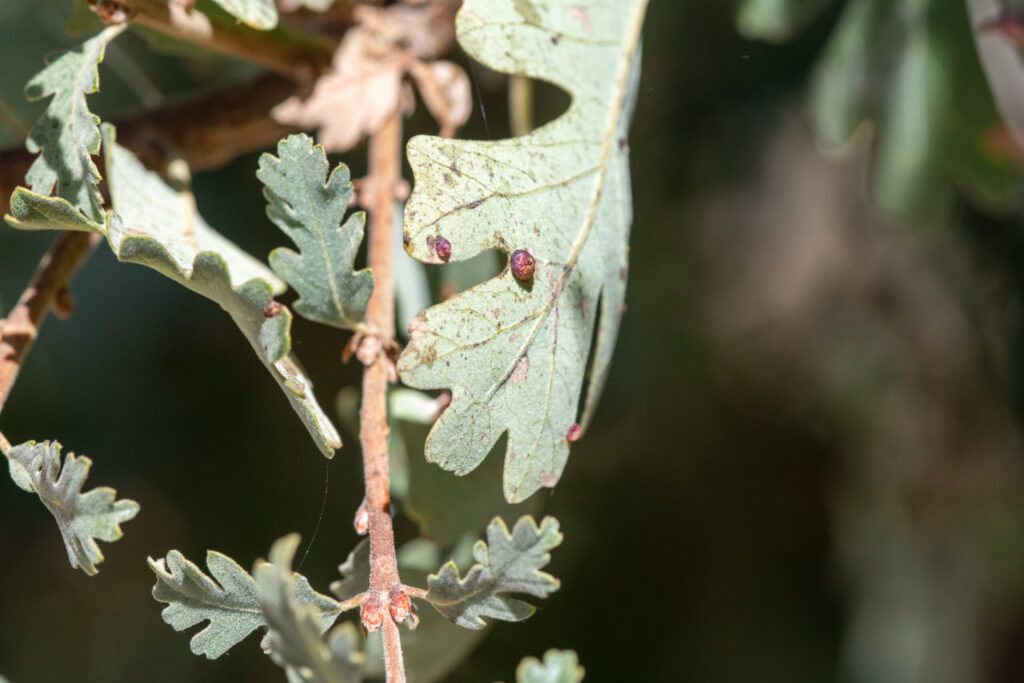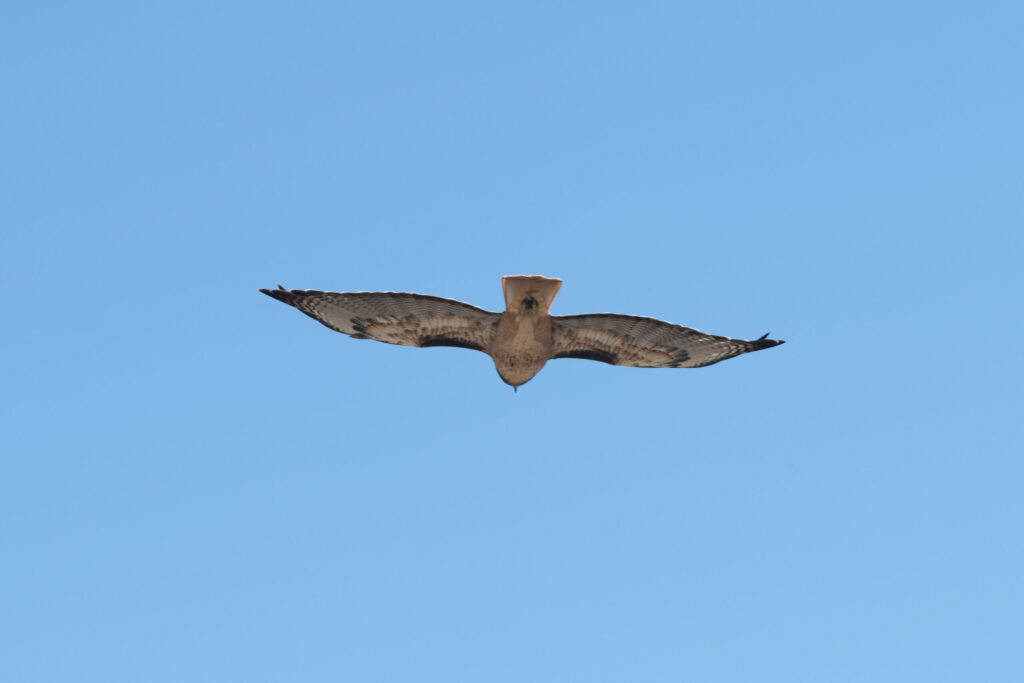I’ve been reading Douglas Tallamy’s book on oaks (The Nature of Oaks), which has prompted me to take a renewed interest in the stunning live (and one deciduous) oaks on our property here on California’s central coast. Acorns, galls, wasps, all are of interest, and I’ve not done nearly the amount of looking at them that I need to.
We have five large mature oaks and dozens of young volunteers on our almost-three acres. Four of the large trees are live oaks, most likely Interior Live Oak (Quercus wislizeni) and one is a “dead oak” (the tongue-in-cheek reference to a deciduous oak, by contrast to the “evergreen” oaks on the rest of the site), most likely Valley Oak (Quercus lobata). They’re huge: most of them at least 100 feet in canopy spread, 80 feet tall, with robust large trunks.
And these giant trees play host to an enormous amount of activity, even on a cold morning in mid-October. Here’s some of what I saw going on in them this Saturday.
The galls are a totally new world. I’ve known for decades now “what” they are–a reaction by the oak to a parasitoid wasp laying eggs–but I’ve never really stopped for long enough to see how many different kinds there are. I haven’t even begun to scratch the surface, but I’ve got at least four different types. I’ve already “identified” one of them (Antron douglassii, first generation, the “Spined Turban Gall Wasp”) thanks to Joyce Gross’s web page dedicated to them. (I’ve even found the same gall in its “basketball” form second generation, but I wasn’t able to get a decent image.) A few of the others resemble some of the gall on Gross’s website, but I haven’t compared them in enough detail to be sure.
And, sure enough, when you’re carrying around your macro lens, that’s when you’ll want your birding telephoto instead: of course the resident red-tailed hawk alit in the closest oak to me, but by the time I was able to get in position for the shot, he saw me and vamoosed.

